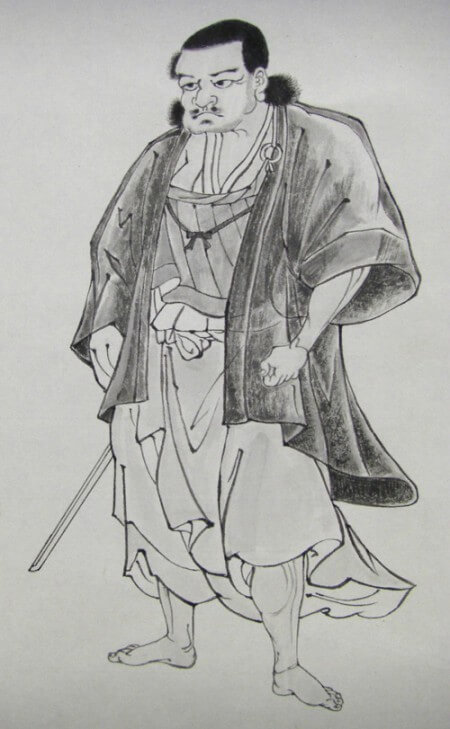Authentic Japanese martial arts
Mugai Ryu is an old, authentic martial art trained by the samurai. It was founded in 1693 by Tsuji Gettan Sukeshige and has been passed down from generation to generation ever since. All schools under Mugai Ryu International teach Mugai Ryu Meishi Ha under Niina Toyoaki Gyokusou Soke.
A deep connection to Zen and an unadorned beauty create the characteristic calm and sharp focus of this sword fighting style. The aim is purism: no unnecessary movements with the sword or body are wanted. This style is geared towards application-related effectiveness. It is “cutting Iai”. Therefore, all techniques must be able to cut as well as be effective in combat.
As one of the first liberalized sword fighting styles in Japan, it represents the unconditional opening of Iaido to non-Japanese, women and disabled people of all religions. The training in our dojos takes place in a meditative, respectful and calm atmosphere. The student is introduced step by step to Bushido as a path of Zen Buddhism. Mugai Ryu is Zen in motion.
The Japanese word “Iaido” consists of two parts: Iai, which can be translated as “mental presence” and “immediate reaction” and Do, which means “the way” in English. Combining this gives “the way of full concentration and immediate reaction”. When directly talking about sword fighting, the equivalent translation “the way of drawing the sword” is also common.
Mugai Ru Iaihyodo
Strictly speaking, Mugai Ryu Iaido is actually a style called Jikkyoryu, but because its practitioners were teaching Jikkyoryu, this form of iaido is generally referred to simply as Mugai Ryu. The founder of this martal art, Tsuji Gettan, learned Jikkyoryu from its founder, Taga Jikkyoken Morimasa, and successive generations of the Tsuji family learned Jikkyoryu from the subsequent soke (head master) of Jikkyoryu directly.

Jikkyoryu was officially inherited by the Mugai Ryu practitioners of the time when it was clear that there would be no successor in Jikkyoryu beyond the 6th generation soke. Contemporary Mugai Ryu is comprised of Jikkyoryu iaido taught in conjunction with classical Muga Ryu swordsmanship. Nakagawa Shiryu Shinichi, 11th soke , is credited as the driving force behind both styles reformation and known as the master who reinvented the art, which he christened “Mugai Ryu Iaihyodo”.
Takahashi Yasuke Mitsuaki, the 6th soke of Mugai Ryu, and his brother, Hidezo, were taught Jikkyoryu by the 5th generation soke of Jikkyoryu, Yamamura Masashige. The Takahashi brothers were the ones who truly incorporated Jikkyoryu into Mugai Ryu teachings, but it would be Nakagawa Shiryu Shinichi who would ultimately compile the iaido forms into the 20 primary and 3 naiden forms familiar to Mugai Ryu practitioners today.
Contemporary practitioners of Mugai Ryu are students of Mugai Ryu Iaihyodo as it was recompiled by Nakagawa Shiryu Shinichi.
The Mugai Ryu Lineage
- First Generation Founder Tsuji Gettan Sukemochi 1648-1727 Edo
- Second Generation Tsuji Uheita ~1742 Edo
- Third Generation Tsuji Kimata Sukefusa ~1761 Edo
- Fourth Generation Tsuji Bunzaemon Suke kata ~1787 Edo
- Fifth Generation Tsuji Kimata Sukeyuki ~1812 Edo
- Sixth Generation Takahashi Hachisuke Mitsuaki 1750~1809 Himeji
- Seventh Generation Takahashi Tatsuzo Mitsuharu 1784~1835 Himeji
- Eighth Generation Takahashi Hachisuke Nariyuki 1816~1880 Himeji
- Ninth Generation Takahashi Tetsuo Takenari 1830~1876 Himeji
- Tenth Generation Takahashi Kyutaro Ko-un 1859~1940 Dai Nippon Budokai
- Eleventh Generation Nakagawa Shiryu Shinichi 1896~1981 The Iaido Federation
- Menkyo Kaiden Nakatani Toshiyuki
- Menkyo Kaiden Shirai Ryotaro
- Menkyo Kaiden Toda Seiju
- Menkyo Kaiden Okamoto Yoshiharu
- Menkyo Kaiden Konishi Misakazu
- Menkyo Kaiden Nagasawa Masao
Nakgawa sensei appointed Ishii Gogetsu as the 12th soke of Mugariyu, but due to various circumstances, Ishii subsequently separated himself from Nakagawa leaving the art without a successor. Nakagawa passed away before he could appoint another student to the position of soke. As a result, many of Nakagawa’s students who were recipients of both menkyo (license) and menkyo kaiden (full transmission license) began referring to themselves as successive soke. However, among these licensed students of Nakagawa sensei, there has never been an official successor simultaneously recognized by each independent branch of Mugairyu, the All Japan Kendo Federation, the All Japan Iaido Federation or the Iaido Federation of Japan. Each soke should be correctly referred to as the soke of their particular branch of Mugairyu.


